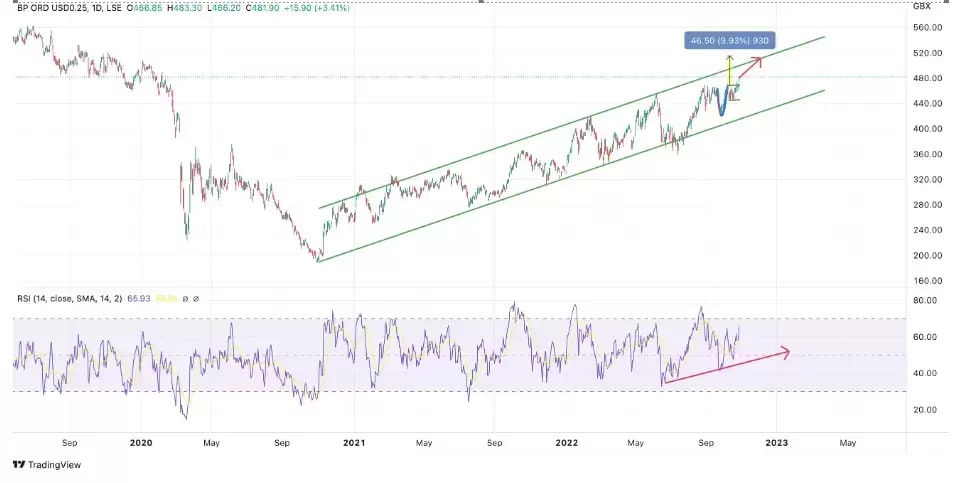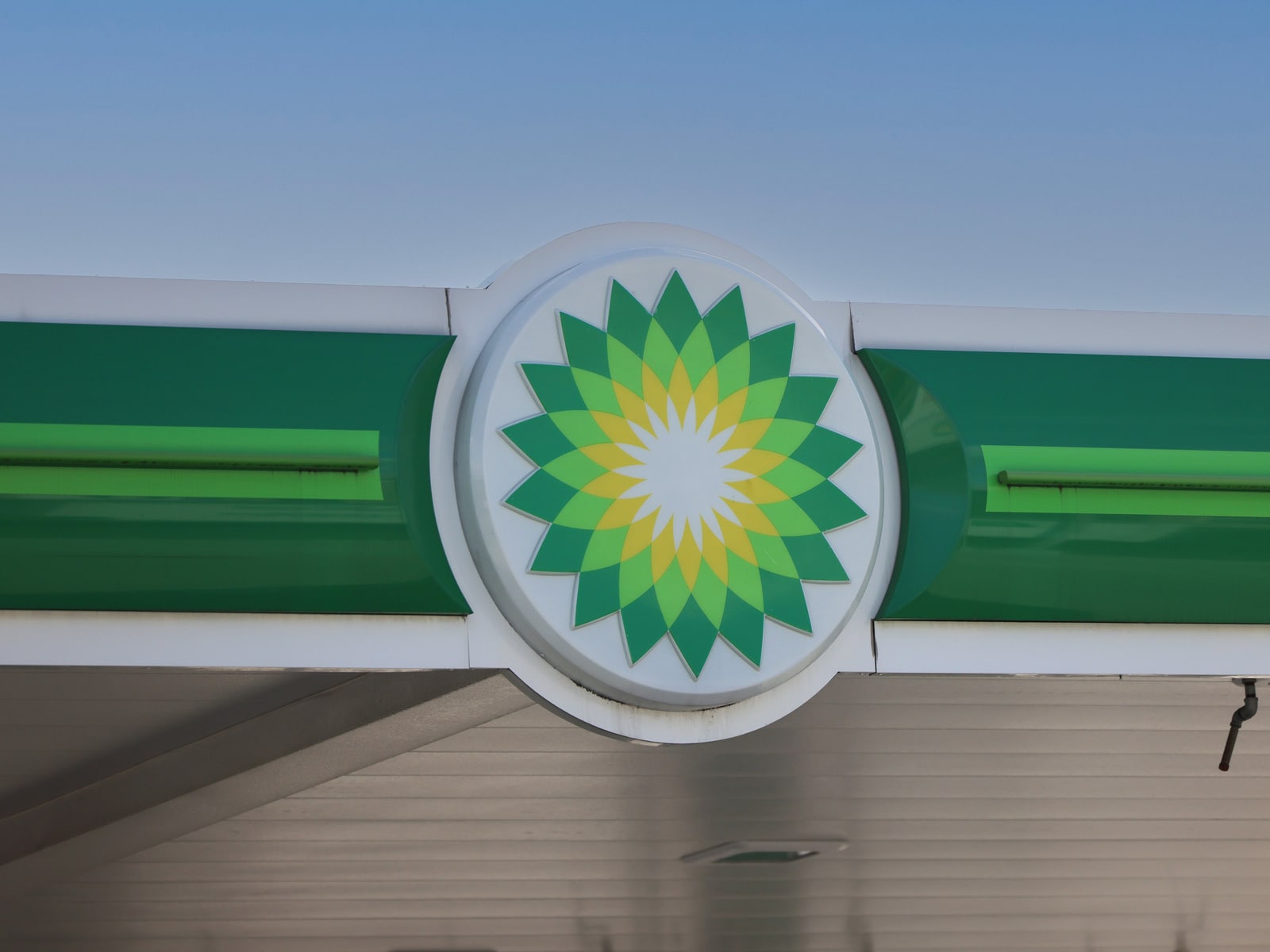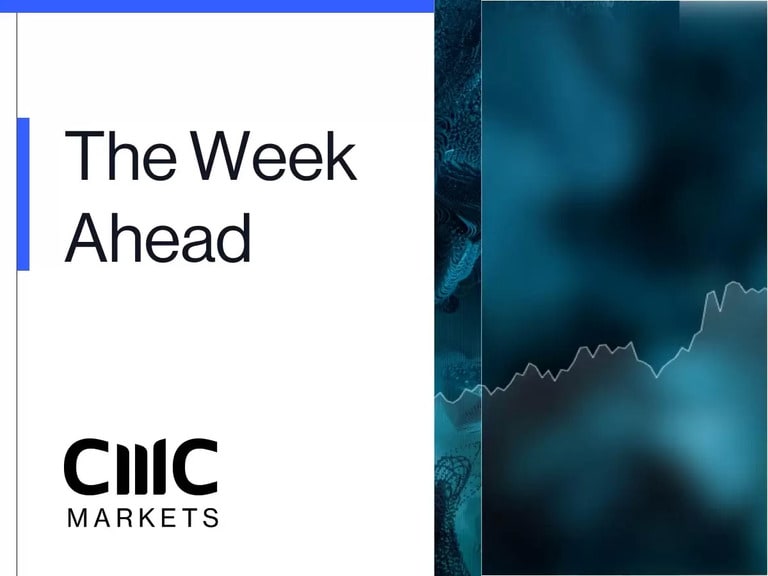Falling oil prices and tightening refining margins are expected to lead to a quarter-on-quarter dip in BP’s [BP.L] Q3 revenue and earnings. The oil major is due to announce the results before markets open on 1 November.
With global crude oil hitting 13-year highs earlier in 2022, it has been a bumper year for oil and gas producers. BP tripled its profits between April and June, boosting its share price to a two-year high of 456p during intraday trading on 9 June. The shares have since climbed higher, reaching 483.30p during intraday trading on 27 October, even though the price of Brent crude fell 23.8% between 9 June and 26 October.
As a result of the drop in oil prices, analysts expect BP’s earnings to decline from the previous quarter. Analysts polled by the Financial Times have a consensus Q3 revenue forecast of $45.18bn, representing a 33.4% fall from Q2, with earnings set to weaken by 25.6% over the same period to $0.32 per share. However, on a year-on-year basis the estimates show a revenue rise of 24.9%, with earnings doubling.
Competitor Shell [SHEL.L] set a precedent on 27 October, posting Q3 results which showed that its earnings had doubled year-on-year, though they came in lower than the record highs of earlier this year.
Refining margins
When BP released its Q2 results on 2 August, the company’s results included headline profits of $9.26bn – its highest for 14 years. CEO Bernard Looney hailed the results as demonstrating “that BP continues to perform while transforming”.
CFO Murray Auchincloss highlighted during the earnings call that net debt fell for the ninth successive quarter. The decline meant that the company was able to deliver on its shareholder distributions, with Auchincloss confirming that Shell would return money to shareholders by raising its dividend 10% and implementing a $3.5bn share buyback.
Earnings per share of $0.43 were 22.9% above Financial Times analyst expectations of $0.35, helping BP’s share price to gain 2.8% as investors responded to the news. The earnings beat amid elevated oil prices has contributed to the BP share price rising more than 35% year-to-date, vastly outperforming the FTSE 100’s roughly 6% fall this year.
As Shell’s performance shows, however, conditions were not as rosy for oil and gas producers in Q3 as in Q2. In BP’s Q2 results, the company anticipated refining margins to remain “elevated due to ongoing supply disruptions” through Q3.
However, Shell’s margins were squeezed in Q3 by a recovery in global supply. BP’s realised refining margins will therefore be a key factor in determining whether its earnings beat or miss.
Buybacks and outages
Jefferies analysts expect that BP’s excess cash generation could lead to it increasing its share buyback programme by $400m to $700m, although the recent acquisition of US biogas company Archaea could mean it retains previous levels of share repurchasing.
On 24 October, Kim Fustier of HSBC increased her BP stock rating to ‘buy’ from ‘hold’, and raised her price target to 530p from 475p, saying in a note that European oil majors are unjustifiably undervalued compared to their US counterparts. Fustier believes that oil producers will continue to perform to year end off the back of increasing oil prices.
The 27 analysts polled by the Financial Times broadly share Fustier’s optimism. Five gave the stock a ‘buy’ rating, 14 say it will ‘outperform’, seven advise to ‘hold’, and one rates it ‘underperform’. Of 23 analysts offering 12-month price forecasts for BP, the median estimate was 514.44p, representing an increase of 6.8% on the 27 October closing price of 481.90p.
Technical analysis: strong long-term uptrend
Michael Kramer, a trader and technical analyst who founded Mott Capital Management, believes that BP stock has the potential to move higher.
He told CMC Markets that “the technical chart for BP’s London-listed shares has been solid. The shares have risen in a rising channel very steadily since November 2020. The stock tested this channel's upper and lower bounds over the past two years, and the equity has respected those bounds each time,” as the chart below shows.
“The stock, at this point, is in the middle of the trading channel, which would suggest it could rise to that upper bound of around 500 pence,” said Kramer. He added that “the relative strength index [RSI] is trending higher, suggesting strong bullish momentum and that the stock is not overbought on an RSI basis. As long as the RSI continues to make a higher low, it indicates that momentum in the equity will remain bullish”.

Short-term gains?
Although Kramer notes the potential for short-term gains, he also warned of the possibility that BP shares could slide.
“On a short-term basis, BP appears to have formed a cup-and-handle – a bullish technical continuation pattern – suggesting that the stock can rise further,” he told us with reference to the below chart.
“Measuring the length from the bottom of the cup to the break-out point on the handle, the stock can rise to around 515p to 525p,” Kramer said.
However, he also cautioned that “if the stock were to fail to follow through and fall below approximately 445p, the shares could slip to around 420p at the lower bound of the trading channel”.

Disclaimer: CMC Markets is an execution-only service provider. The material (whether or not it states any opinions) is for general information purposes only, and does not take into account your personal circumstances or objectives. Nothing in this material is (or should be considered to be) financial, investment or other advice on which reliance should be placed. No opinion given in the material constitutes a recommendation by CMC Markets or the author that any particular investment, security, transaction or investment strategy is suitable for any specific person. The material has not been prepared in accordance with legal requirements designed to promote the independence of investment research. Although we are not specifically prevented from dealing before providing this material, we do not seek to take advantage of the material prior to its dissemination.






